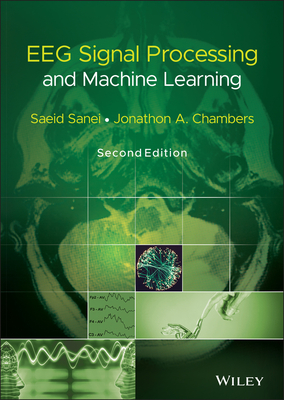Design Of A Brain Computer Interface Based on Electroencephalogram: A Complete System Design from Hardware Implementation to High Level Application (Paperback)
暫譯: 基於腦電圖的腦機介面設計:從硬體實現到高階應用的完整系統設計 (平裝本)
Ozan Gunaydın
- 出版商: LAP LAMBERT
- 出版日期: 2011-05-25
- 售價: $2,530
- 貴賓價: 9.5 折 $2,404
- 語言: 英文
- 頁數: 136
- 裝訂: Paperback
- ISBN: 3844391509
- ISBN-13: 9783844391503
-
相關分類:
Ceph
無法訂購
買這商品的人也買了...
相關主題
商品描述
A Brain Computer Interface (BCI) is a communication device between the brain and an external device, usually a computer. The main purpose of BCI systems is repairing or assisting human motor-sensory functions by asking the brain to control synthetic devices, computer cursors or robot arms. In this study, both acquisition hardware and software of a two channel EEG based brain computer interface was designed. After investigation of the components in EEG, motor imagery related mu and beta rhythms were selected for the information sources of the system. In order to discriminate left and right hand movement imagery, three different feature extraction methods was developed using: Discrete Wavelet transform, Power Spectrum transform and Band Pass FIR filters for Mu and Beta rhythms. These features were used as inputs to a two layer feed forward Back propagation neural network for classification. Designed system was trained and simulated with the data provided in BCI Competition II. With the direction of the results, a low power system with the TI MSP430 microcontroller using FIR filters and a neural network was implemented.
商品描述(中文翻譯)
腦機介面(BCI)是一種在大腦與外部設備(通常是電腦)之間的通訊裝置。BCI 系統的主要目的是透過要求大腦控制合成設備、電腦游標或機器手臂來修復或協助人類的運動感覺功能。在本研究中,設計了一個基於兩通道腦電圖(EEG)的腦機介面的獲取硬體和軟體。在對 EEG 組件進行調查後,選擇了與運動意象相關的 mu 和 beta 節律作為系統的信息來源。為了區分左手和右手的運動意象,開發了三種不同的特徵提取方法,使用了:離散小波變換(Discrete Wavelet transform)、功率譜變換(Power Spectrum transform)和帶通有限脈衝響應濾波器(Band Pass FIR filters)來處理 Mu 和 Beta 節律。這些特徵被用作兩層前饋反向傳播神經網絡的分類輸入。設計的系統使用 BCI Competition II 提供的數據進行訓練和模擬。根據結果的指導,實現了一個低功耗系統,使用 TI MSP430 微控制器,並採用了 FIR 濾波器和神經網絡。



















